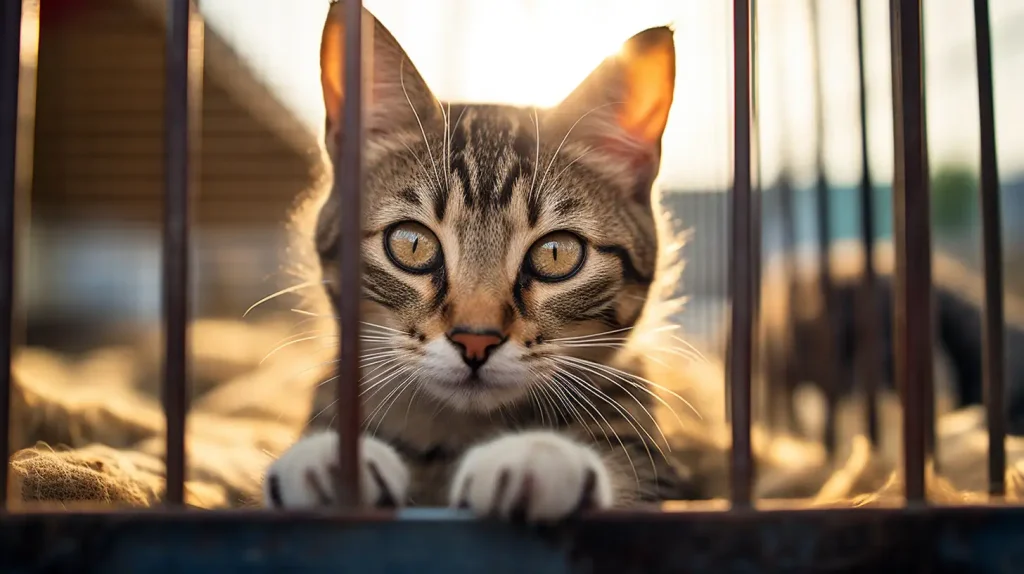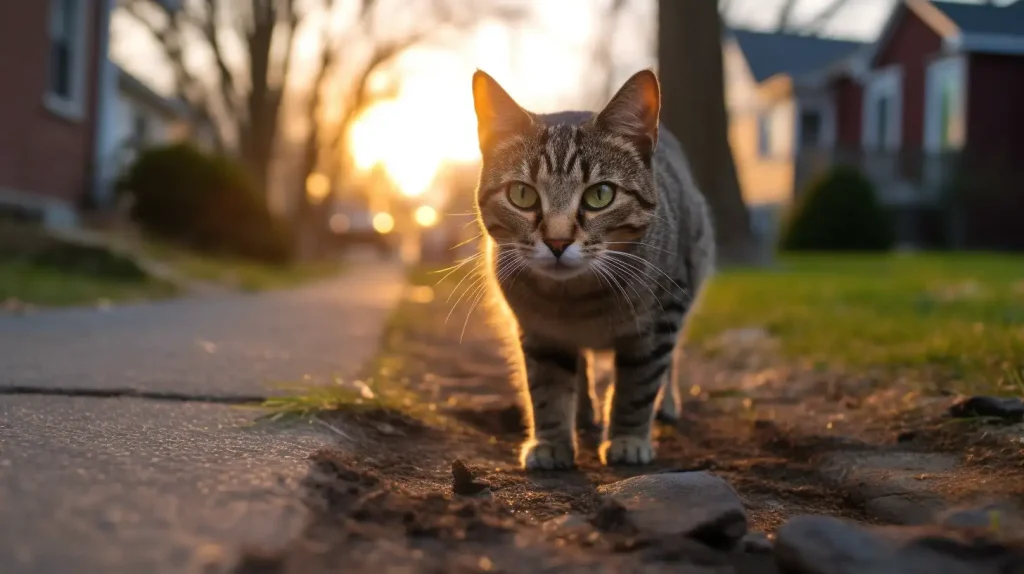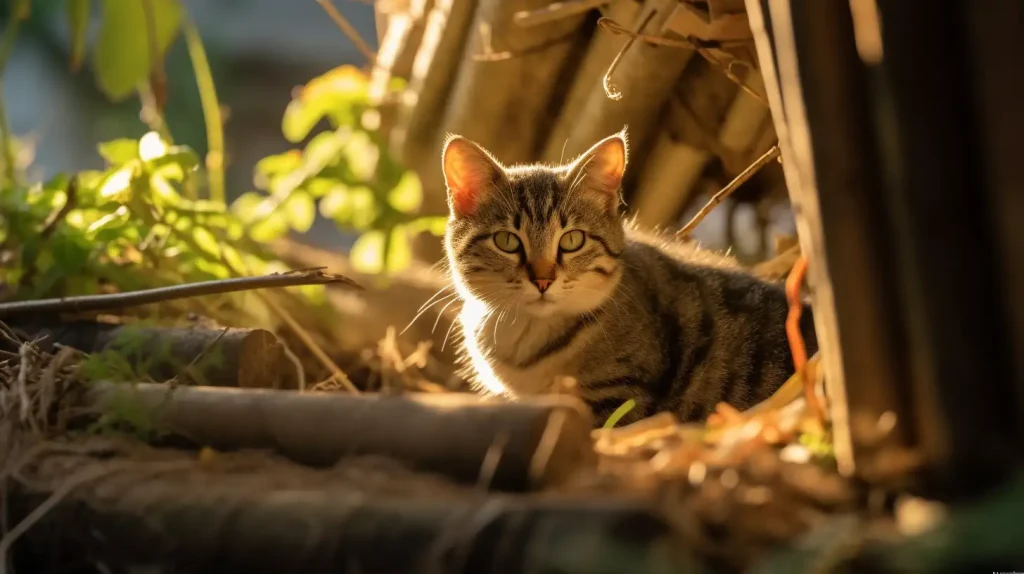Table of Contents
Cat rescues and shelters play a vital role in improving the welfare of stray felines. With millions of cats living on the streets, cat rescue organizations and animal shelters provide care, protection, and support to these animals in need. From rescue and rehabilitation to adoption efforts, these organizations work tirelessly to ensure that stray cats receive the care they deserve.
Key Takeaways:
- Cat rescues and shelters are essential in providing care and support to stray cats.
- These organizations are crucial in improving the welfare of felines living on the streets.
- Their rescue, rehabilitation, and adoption efforts reduce the number of homeless cats in the community.
The Rescue Process and Stray Cat Intake
When a cat rescue organization responds to a report of a stray cat, their primary concern is the welfare of the animal. These organizations understand that stray cats can face numerous challenges, including malnutrition, injury, disease, and exposure to other predators. They take several steps to ensure the cats receive the support and care they need.
The first step is to capture the cat safely and securely. The rescue team is trained to handle cats of all temperaments and sizes, often using humane traps to capture feral cats. Once in the care of the rescue, the cat undergoes an intake examination. The process includes a thorough medical evaluation, vaccinations, and testing for feline diseases such as feline leukemia and FIV.
The intake process also involves identifying any injuries or behavioral issues that require attention. This could include addressing dental problems, providing medication for infections, treating wounds, or offering socialization to cats that were living feral for an extended period.
Cat rescue organizations are dedicated to ensuring the safety and comfort of the cats they rescue. They provide food, water, and a clean environment for the animals while they are in their care. The cats receive a safe place to live, free from any potential dangers or threats they might face on the streets.
The ultimate goal is to prepare these cats for adoption. Through a combination of proper nutrition, medical care, and socialization, cat rescues ensure the cats are healthy and ready for their forever homes. They take great care in screening potential adopters to ensure the cats will go to loving and responsible homes.
By providing a safe haven for stray cats and investing in their well-being, cat rescue organizations make an essential contribution to the overall welfare of the homeless feline population.
Rehabilitation and Medical Care for Stray Cats
Cat rescues and shelters play a crucial role in rehabilitating and providing medical care to stray cats. These organizations prioritize the cats’ well-being and ensure they receive the necessary care to prepare them for adoption.
Upon intake, each cat undergoes a thorough examination by a veterinarian to assess their medical condition. The medical professionals address any underlying health issues to ensure the cats are healthy and comfortable. This attention to detail helps them become adoptable and assists in preventing health issues from persisting.
In addition to medical care, the rescues also provide proper nutrition and a safe environment to recover in. They ensure the cats receive vaccinations, spay/neuter services, and parasite treatments before placing them up for adoption.
Rehabilitation for stray cats is a complex process that requires patience, time, and resources. Cat rescues and shelters invest in the resources needed to ensure each cat receives adequate medical care and rehabilitation services. This investment is critical as it increases the chances of successful adoption and reduces the likelihood of cats returning to the streets.
With the proper care and rehabilitation services, these rescued cats are often able to regain their health and friendly disposition, making them perfect candidates for adoption. Rescued cats are often socialized, litter box trained, and ready to be welcomed into their forever homes.
By providing medical care and rehabilitation services to stray cats, cat rescues and shelters improve their welfare and increase the chances of successful feline adoption.
The Role of Cat Rescues and Shelters in Community Cat Management and Feral Cat Control
Community cat management and feral cat control are critical components of cat rescues and shelters’ efforts to reduce the homeless cat population. These organizations work tirelessly to address the root causes of community cats’ overpopulation and provide long-term solutions for their welfare.
One of the primary methods used by cat rescues and shelters for feral cat control is trap-neuter-return (TNR) programs. TNR programs are a humane and effective way of managing feral cat populations. Through TNR, feral cats are trapped, spayed or neutered, vaccinated, and returned to their original location to live out their lives without reproducing.
Cat rescues and shelters also provide education and resources to communities on responsible cat ownership and feral cat management. By educating the public about the importance of spaying/neutering their cats, these organizations help prevent the birth of countless kittens, many of which would end up homeless and in need of rescue.
Moreover, these programs help decrease the burden on animal shelters and reduce the number of cats euthanized due to overcrowding. Cat rescues and shelters offer a humane alternative that benefits both the cats and the community.
Through their community cat management and feral cat control initiatives, cat rescues and shelters play a crucial role in improving the lives of homeless cats. By working together with communities, these organizations can reduce the number of cats on the streets and ensure their welfare is prioritized, ultimately creating a safer and healthier environment for both cats and people.
Adoption and Rehoming Efforts
One of the primary objectives for cat rescue organizations and shelters is to find loving, permanent homes for the cats in their care. The adoption process typically involves several steps to ensure the best possible outcome for both the cat and the adopter.
Cat rescue organizations and shelters often have rigorous screening processes that potential adopters must go through. These can include completing an adoption application, undergoing home visits, and meeting specific requirements for the adopter’s lifestyle and living situation. These measures help ensure that the cat will be placed in a safe, loving environment where their needs will be met.
Adopters are also provided with information and support to help them integrate their new feline family member into their home. This might include advice on how to introduce the cat to other pets, how to provide proper nutrition and exercise, and how to manage any behavioral issues that might arise.
Once a cat has been adopted, many cat rescue organizations and shelters continue to offer ongoing support and resources for adopters. This can include follow-up calls or visits to ensure the cat is adjusting well, access to low-cost veterinary care, and guidance on any challenges that may arise.
Through these adoption and rehoming efforts, cat rescues and shelters provide abandoned cats with a second chance at a happy life in a loving home.
The Role of Cat Rescues and Shelters in Helping Stray Cats
Cat rescues and shelters play a crucial role in aiding stray cats in the community. These organizations are dedicated to providing care, protection, and support to felines in need, with a focus on improving animal welfare. Through their efforts, cat rescues and shelters have made a significant impact on reducing the number of homeless cats and improving the health and well-being of those in their care.
Supporting Stray Cat Welfare
Cat rescues and shelters provide essential support for stray cats in the community. They work tirelessly to identify and rescue stray cats, providing them with shelter, food, and medical care. Their intake procedures ensure that cats receive proper care and attention, and their rehabilitation efforts help prepare them for adoption. Additionally, cat rescues and shelters manage feral cat populations through trap-neuter-return (TNR) programs, helping to prevent future generations of homeless cats.
Rehoming Efforts
One of the primary goals of cat rescues and shelters is to find loving, permanent homes for their feline residents. They undertake thorough screening processes to ensure that potential adopters are a good fit for the cats’ needs. Additionally, these organizations provide ongoing support to adopters, ensuring successful integration and continued care. Through their rehoming efforts, cat rescues and shelters offer homeless cats a chance for a better life and a brighter future.
The Ongoing Need for Support
Despite the tremendous work done by cat rescues and shelters, there is an ongoing need for support and recognition of their vital role in the community. Consider making a donation or volunteering your time to support these organizations. By doing so, you can help ensure that they continue to provide essential support for stray cats and improve animal welfare in your community.



